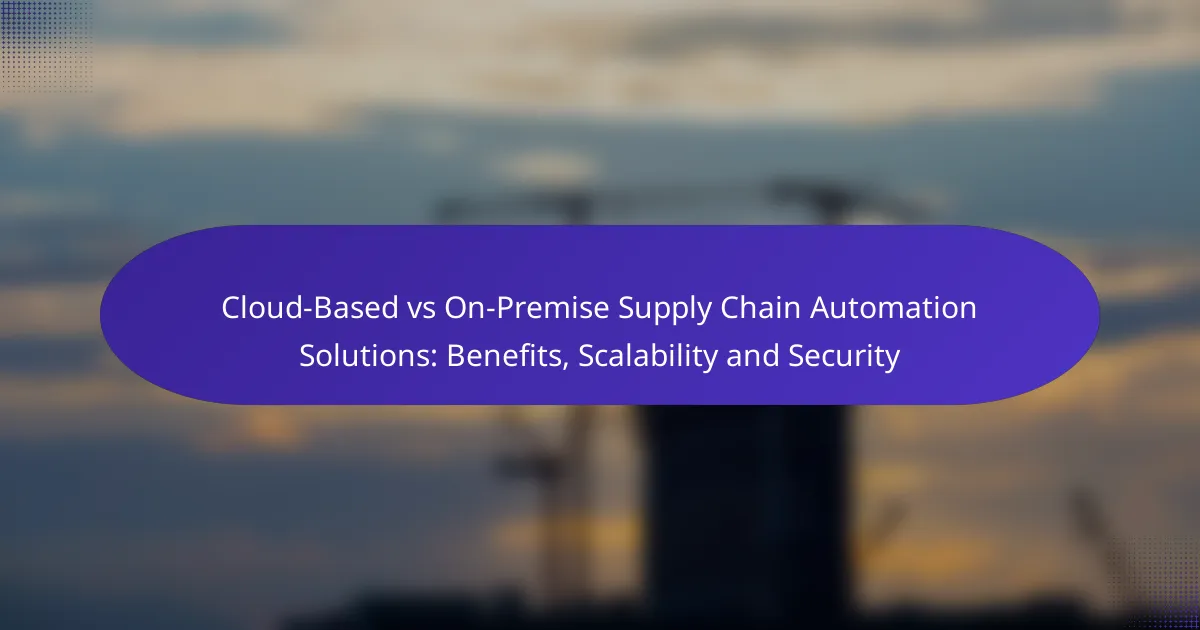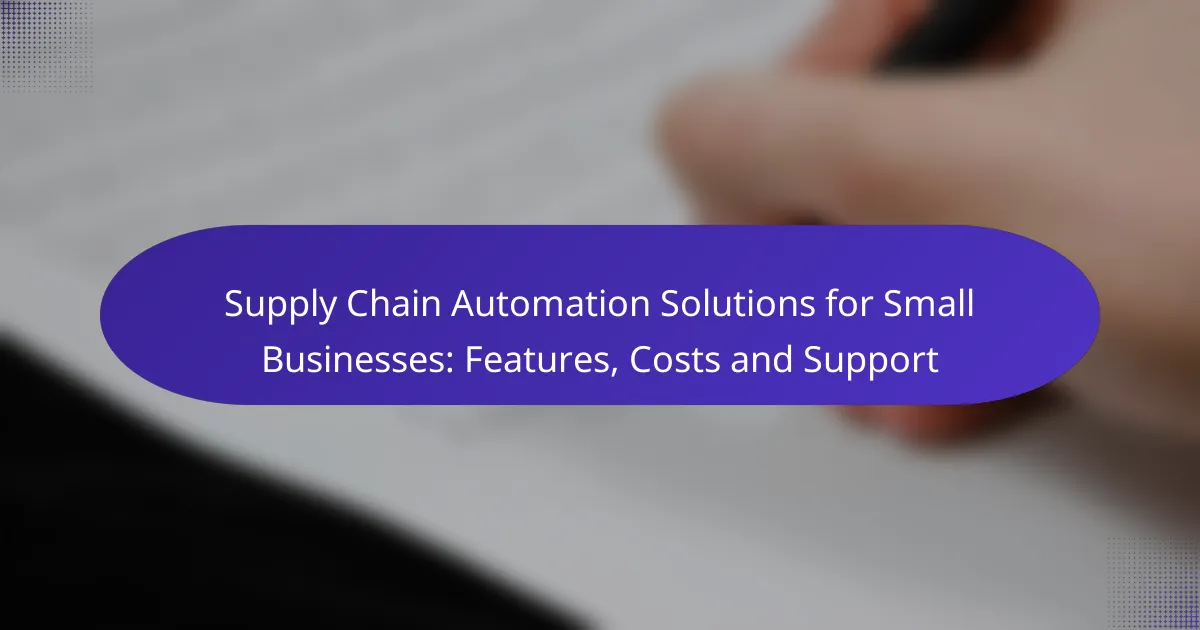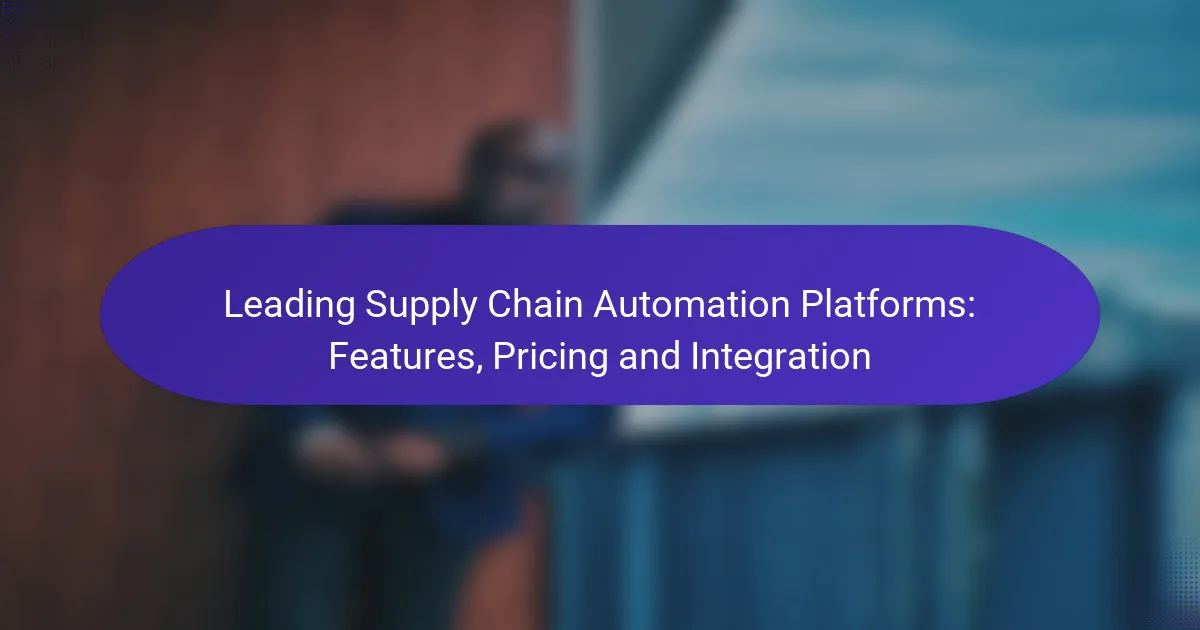In the evolving landscape of supply chain management, businesses face a critical choice between cloud-based and on-premise automation solutions. Cloud-based systems provide flexibility, cost savings, and real-time analytics, enabling rapid adaptation to market dynamics. Conversely, on-premise solutions offer enhanced data control and customization, making them ideal for organizations with specific regulatory requirements. Understanding the benefits, scalability, and security implications of each option is essential for making an informed decision.
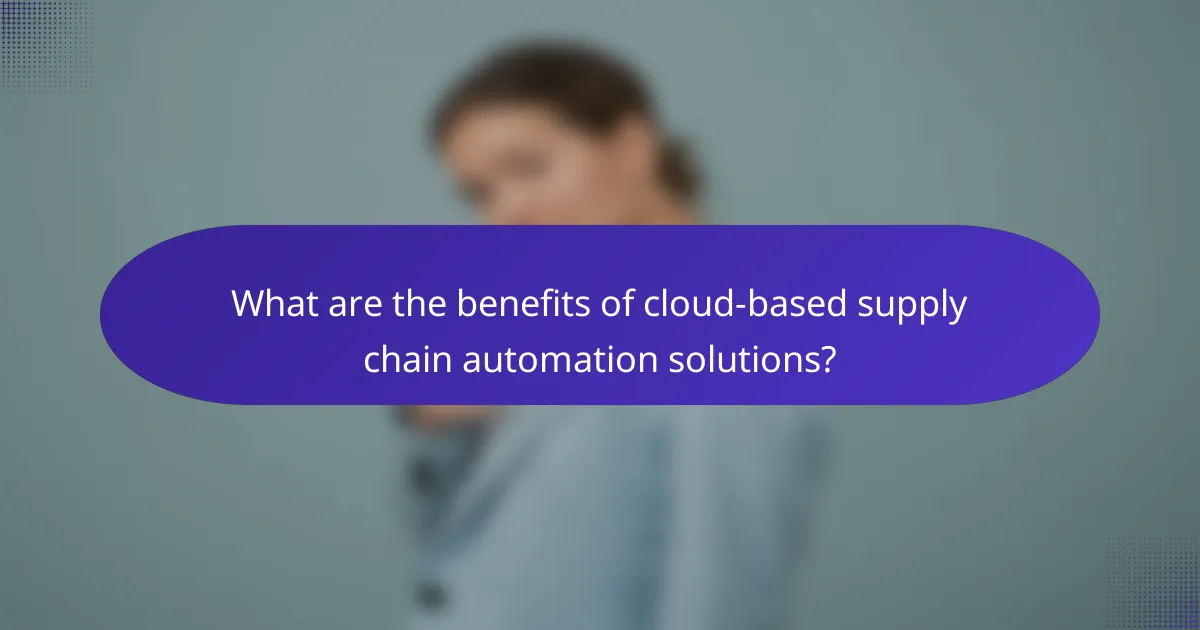
What are the benefits of cloud-based supply chain automation solutions?
Cloud-based supply chain automation solutions offer numerous advantages, including cost savings, enhanced flexibility, and improved data accessibility. These systems enable businesses to streamline operations, respond quickly to market changes, and leverage real-time analytics for better decision-making.
Cost efficiency
Cloud-based solutions typically reduce upfront costs associated with hardware and infrastructure. Businesses can avoid significant capital expenditures by opting for subscription-based models, paying only for what they use, which can lead to savings of 20-30% compared to on-premise systems.
Additionally, maintenance and operational costs are often lower, as cloud providers manage updates and support, allowing companies to allocate resources more effectively.
Flexibility and accessibility
Cloud-based supply chain solutions provide unparalleled flexibility, enabling users to access systems from anywhere with an internet connection. This is particularly beneficial for teams working remotely or across multiple locations, as it facilitates collaboration and real-time communication.
Moreover, businesses can easily scale their operations up or down based on demand, adjusting resources without the need for significant investments in physical infrastructure.
Real-time data analytics
One of the key benefits of cloud-based automation is the ability to harness real-time data analytics. This allows businesses to monitor supply chain performance continuously and make informed decisions based on up-to-date information.
For instance, companies can track inventory levels, shipment statuses, and supplier performance in real-time, enabling them to respond quickly to disruptions or opportunities in the market.
Automatic updates
Cloud-based systems typically include automatic updates, ensuring that businesses always have access to the latest features and security enhancements. This reduces the burden on IT teams and minimizes the risk of using outdated software.
Automatic updates can also enhance compliance with industry standards and regulations, as cloud providers often implement necessary changes promptly to meet evolving requirements.
Scalability
Scalability is a significant advantage of cloud-based supply chain automation solutions. Businesses can easily expand their capabilities as they grow, adding new features or increasing storage without major disruptions.
This adaptability is crucial for companies experiencing fluctuating demand or those looking to enter new markets, as it allows them to adjust their supply chain operations swiftly and efficiently.
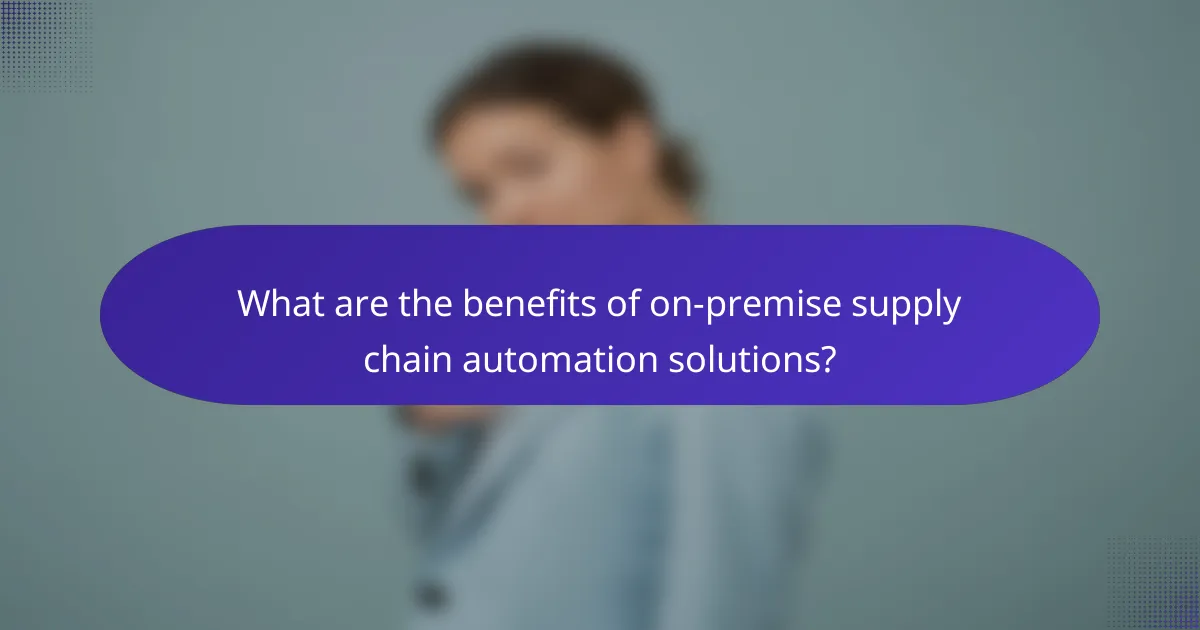
What are the benefits of on-premise supply chain automation solutions?
On-premise supply chain automation solutions offer significant advantages, particularly in terms of data control, customization, and regulatory compliance. These systems allow businesses to maintain their data within their own infrastructure, tailor functionalities to specific needs, and ensure adherence to industry regulations.
Data control and security
On-premise solutions provide businesses with complete control over their data, reducing the risk of unauthorized access that can occur with cloud-based systems. Companies can implement their own security measures, including firewalls and encryption, to protect sensitive information.
Additionally, having data stored on-site allows for faster access and processing times, which is crucial for real-time decision-making. Organizations can also conduct regular audits and updates to their security protocols without relying on third-party vendors.
Customization options
On-premise supply chain automation solutions can be highly customized to meet the unique requirements of a business. Organizations can modify software features, integrate with existing systems, and develop specific workflows that align with their operational processes.
This level of customization can lead to improved efficiency and productivity, as the system can be tailored to address specific challenges faced by the organization. However, it is essential to have skilled IT personnel to manage and implement these customizations effectively.
Compliance with regulations
Companies in regulated industries often prefer on-premise solutions to ensure compliance with local and international regulations. By keeping data in-house, businesses can more easily adhere to standards such as GDPR or HIPAA, which require strict data handling and privacy measures.
Furthermore, on-premise systems allow for better tracking and reporting capabilities, making it easier to demonstrate compliance during audits. Organizations should regularly review and update their compliance strategies to align with changing regulations and industry standards.
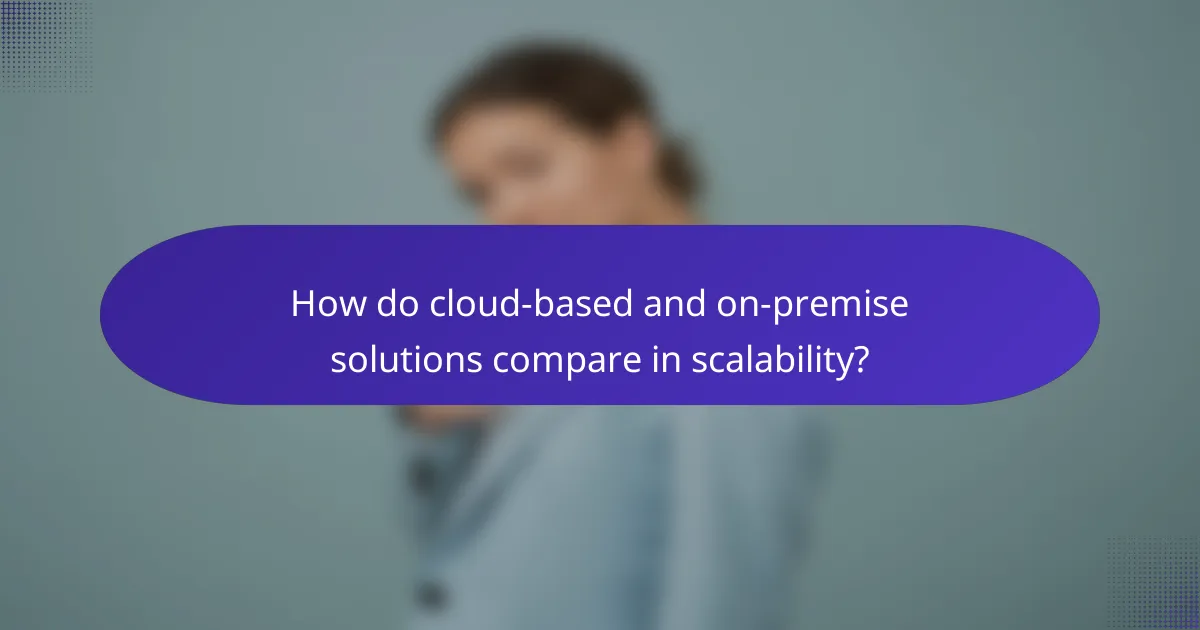
How do cloud-based and on-premise solutions compare in scalability?
Cloud-based solutions generally offer superior scalability compared to on-premise systems. They allow businesses to quickly adjust resources based on demand without significant upfront investment in hardware or infrastructure.
Cloud scalability advantages
Cloud solutions provide on-demand resources, enabling companies to scale up or down easily. This flexibility is particularly beneficial for businesses experiencing fluctuating demand, as they can avoid over-provisioning or under-utilizing resources.
Additionally, cloud providers often have extensive global networks, allowing for rapid deployment across multiple regions. This can enhance performance and reduce latency for users in different locations, making it ideal for companies with international operations.
On-premise scalability limitations
On-premise solutions typically require significant investment in physical infrastructure, which can limit scalability. Businesses may face challenges when trying to expand their systems, as adding capacity often involves purchasing new hardware and software, leading to longer lead times.
Moreover, scaling an on-premise solution may require additional IT staff for maintenance and management, increasing operational costs. Companies must also consider physical space and power requirements, which can further complicate expansion efforts.

What security measures are in place for cloud-based supply chain solutions?
Cloud-based supply chain solutions implement a variety of security measures to protect sensitive data and ensure system integrity. Key strategies include data encryption, access controls, and regular security audits, which collectively enhance the overall security posture of these platforms.
Data encryption
Data encryption is a fundamental security measure in cloud-based supply chain solutions. It involves converting sensitive information into a coded format that can only be deciphered by authorized users with the correct decryption keys. This protects data both at rest and in transit, ensuring that even if data is intercepted, it remains unreadable.
Many cloud providers utilize advanced encryption standards, such as AES-256, which is widely recognized for its robust security. Organizations should verify that their chosen solution complies with these standards to safeguard their data effectively.
Access controls
Access controls are essential for managing who can view or manipulate data within cloud-based supply chain systems. These controls can include role-based access, where permissions are granted based on user roles, ensuring that employees only access information necessary for their job functions.
Implementing multi-factor authentication (MFA) further strengthens access controls by requiring users to provide multiple forms of verification before gaining access. This significantly reduces the risk of unauthorized access due to compromised credentials.
Regular security audits
Regular security audits are critical for identifying vulnerabilities and ensuring compliance with security policies in cloud-based supply chain solutions. These audits typically involve systematic evaluations of the system’s security measures, configurations, and data handling practices.
Organizations should schedule these audits at least annually and consider engaging third-party security experts to provide an objective assessment. This proactive approach helps in addressing potential security gaps before they can be exploited by malicious actors.
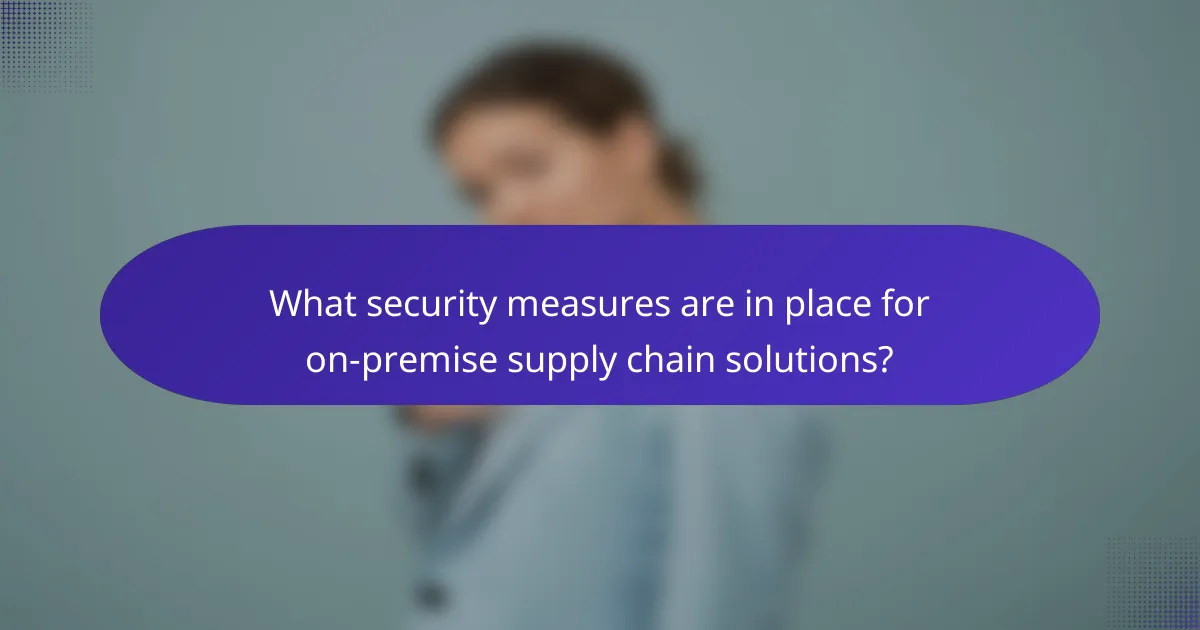
What security measures are in place for on-premise supply chain solutions?
On-premise supply chain solutions implement various security measures to protect sensitive data and ensure operational integrity. These measures typically encompass physical security protocols and network security measures tailored to safeguard the infrastructure and information assets.
Physical security protocols
Physical security protocols for on-premise supply chain solutions include access control, surveillance, and environmental controls. Access control systems, such as key cards or biometric scanners, restrict entry to authorized personnel only. Surveillance cameras monitor facilities to deter unauthorized access and ensure compliance with security policies.
Environmental controls are also crucial, as they protect hardware from physical threats like fire or flooding. For instance, server rooms may be equipped with fire suppression systems and climate control to maintain optimal operating conditions.
Network security measures
Network security measures are essential for protecting data transmitted within on-premise supply chain systems. Firewalls and intrusion detection systems help prevent unauthorized access and monitor for suspicious activity. Regular updates and patches for software and hardware are necessary to mitigate vulnerabilities.
Additionally, implementing a Virtual Private Network (VPN) can secure remote access to the system, ensuring that data remains encrypted during transmission. Regular security audits and penetration testing can further identify and address potential weaknesses in the network infrastructure.
